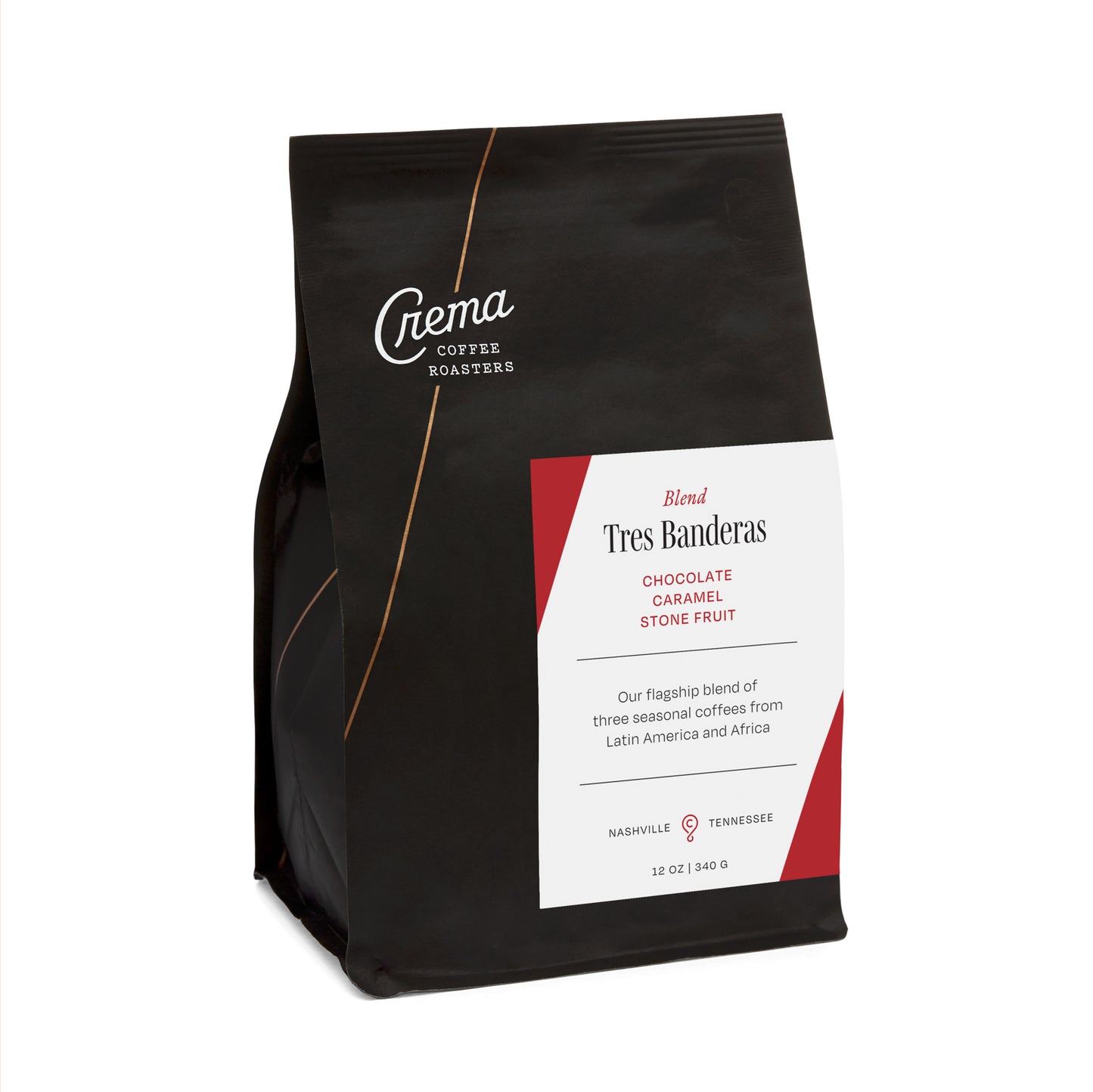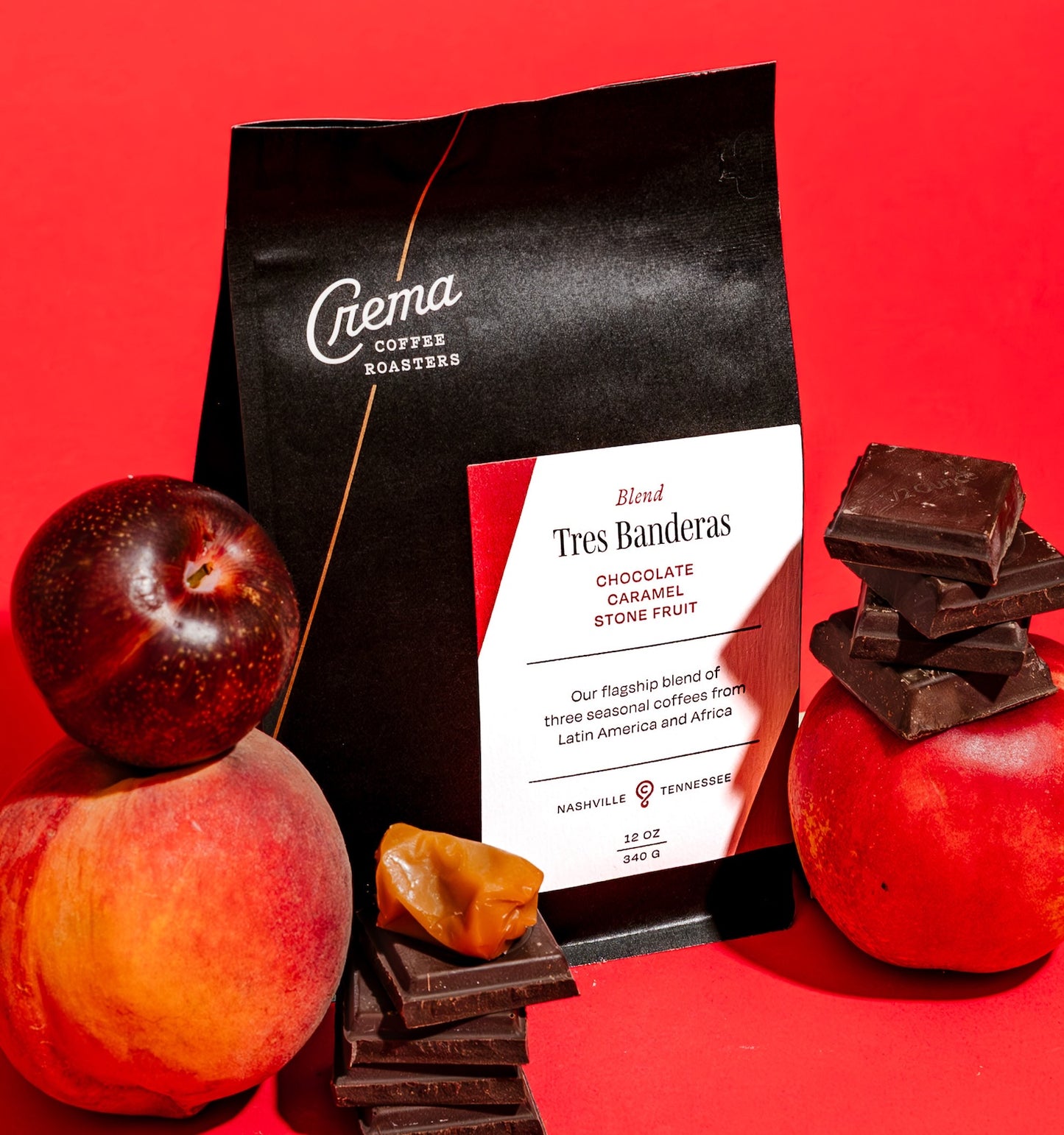At Crema, one of our core principles centers around practicing sustainability and zero-waste. We've outlined the ways that we put these principles into practice in other blogs posts, but we want to shift the focus to what we, as a collective of coffee drinkers can do every day to minimize our waste specifically related to drinking and making the coffee we love so much.
Below, you'll find a handful of practical and easy-to-implement tips for becoming a more sustainably-minded coffee consumer. Here's an overview of what we'll dive into:
- Choosing ceramic cups in cafes
- Buying coffee in compostable bags
- Composting grounds and filters
- Purchasing coffee in bulk
- Brewing the proper amount of coffee
- Upcycling your coffee grounds
PRACTICING SUSTAINABILITY AS A COFFEE DRINKER
1. Default to ceramic/reusable cups in cafes
Instead of opting for a paper cup right from the beginning, get your coffee in a mug and only ask for a paper cup if you don’t finish your drink. Also, keep a travel mug or reusable cup in your car or bag, so you always have it handy if you do need to get your drink to go. (Need a quick clean for your mug? Don’t be afraid to ask a barista to rinse out your cup so we can make your drink in it!)
P.S. At Crema cafes, you’ll always receive a $0.25 discount for bringing in your own cup. Plus, if you do need a paper cup, all of ours are BPI-certified compostable!

2. Buy coffee in compostable bags
Our regular retail bags are (mostly) compostable right at home. There is a quick extra step before you toss it in your compost bin/pile — just cut out the valve and plastic seal. In about 3 month’s time, everything but the plastic liner will break down. Then, just grab that plastic right out and toss it in the regular trash.
This is by no means a perfect solution, but it’s what is currently available to us that will keep the coffee fresh while minimizing environmental impact. All parts of our retail bags will completely break down in 5-10 years, as opposed to the regular plastic/foil combo that takes about 300 years. Read more about our retail bags here .

3. Purchase coffee in bulk
Minimize the amount of packaging overall by getting your coffee in bulk quantities. We offer multiple sizes of all our coffees online (2, 3, 5, 10 lbs) and offer 2lb bags of our best-selling Tres Banderas blend in all of our cafes.
We’ve taste tested our coffee and think it still tastes really great up to 5 weeks after roasting. Even if you’re the only coffee drinker in your household, a 2lb bag will last about 4-5 weeks, which is within our official tasty coffee window.
Check out this handy chart to help you decide which bulk option may be the perfect amount for you.
P.S. There's a bulk discount built right into all the bulk prices, so you're not only saving packaging, you're saving $$! Plus, all bags 2+ lbs always ship free.

4. Compost grounds/filters or use reusable filters
One of the easiest ways to minimize your coffee waste is to compost your grounds and paper filters instead of throwing them in your regular trash bin. These are both backyard and commercially compostable.
You can also decrease your overall waste by purchasing a reusable steel filter or using a French press to brew your coffee. Able Brewing has a plethora of reusable steel mesh filters for all kinds of brewing devices like Chemex, V60, AeroPress, and drip brewers.
Avoid using any single use plastics (such as K-cups or pods) for your coffee brewing. If you do have a machine that brews from pods, buy a reusable one and brew any type of coffee you’d like! (May we suggest ours ?!)
5. Brew the proper amount of coffee
Instead of guessing or eyeballing how much coffee you’ll think you’ll need, use a scale to measure out just enough coffee and water for what you’ll drink. This prevents you from either pouring coffee down the drain because you made a bit too much or having to brew another batch because you need a little more, which wastes another filter and the power used to heat the water/brew the coffee.
For our coffees, we generally recommend a ratio of 1 part coffee to 16 parts water (or for French press, about 1:15). For example, if you want 12 oz of brewed coffee, you’ll measure out 25 grams of coffee and use 400 grams of water to brew. If you want 16 oz of brewed coffee, it’s about 33 grams of coffee and 530 grams of water.
P.S. We sell this scale on our site, but we also love this standard scale as well.

6. Upcycle your coffee grounds
Even though coffee grounds are relatively quick to break down in your compost, there’s a handful of ways to reuse those grounds for other things around the house.
-
DIY Face/Body Scrub
Mix your spent grounds with some oil (like olive or coconut or jojoba), You can also add a little sugar too. There’s tons of recipes out there to make your own coffee scrub!
-
Garden pest control
Spreading your used grounds in your garden can help keep pests like slugs and snails from chomping on your veggies
-
Pot Scrubber
Grab those grounds and sprinkle on your pots and pans and get to scrubbing. Coffee grounds are a gentler form of abrasion than those heavy duty scouring pads, so you can use them on all kinds of surfaces.
-
Odor Neutralizer
Coffee grounds have compounds that can help eliminate odors. Goodbye box of baking soda in the fridge, hello bowl of spent coffee grounds!
-
Tenderize Meat
Coffee contains natural acids and enzymes, making it a great addition to dry rubs. You can also rebrew those grounds, let the (weaker) coffee cool, and use it as part of a marinade.
We hope you learned a new way to practice sustainability! Do you have a coffee-related sustainability tip to share with us? We'd absolutely love to hear it; send us a note here. Now, get yourself some coffee and put your new sustainability knowledge in action!








